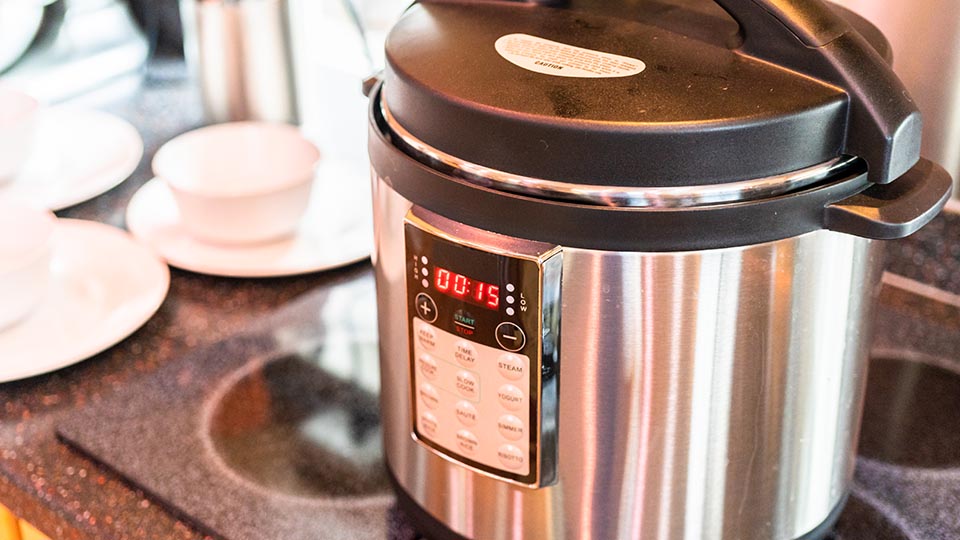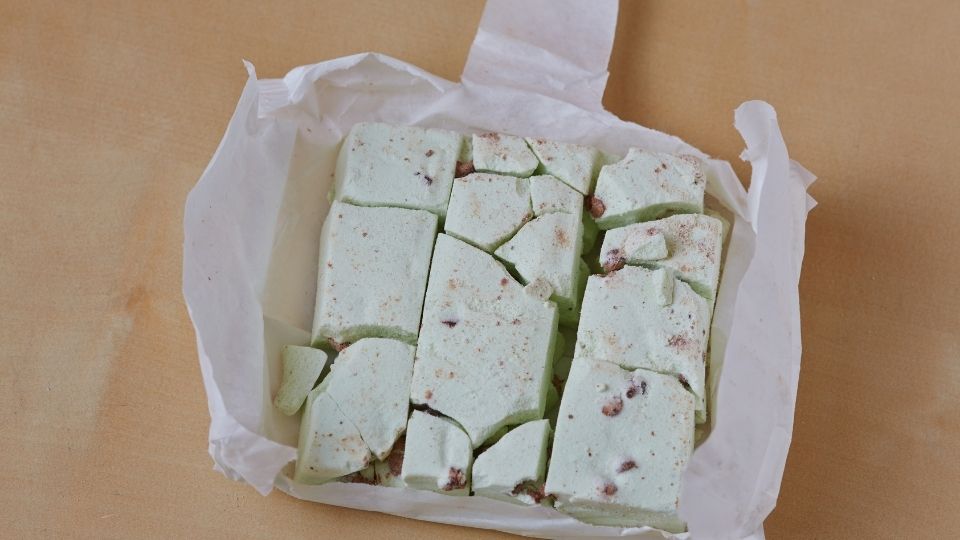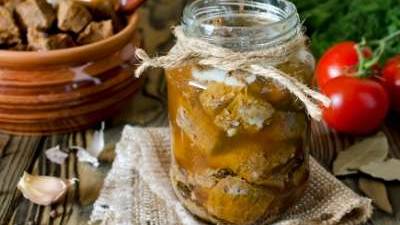Why Electric Pressure Cookers Are Not Pressure Canners

Electric programmable pressure cookers (EPPCs) are popular, convenient kitchen appliances. They cut down on the time spent preparing meals, and with a push of a button stews or rice are cooked to perfection. However, manufacturers and consumers alike are assuming that electric pressure cookers are the newest solution to small batch, push-button pressure canning. Therein lies the problem: pressure cookers (electric or stovetop) are not necessarily pressure canners. This is particularly true with electric pressure cookers because of their mechanical structure. A previous study conducted by USU Extension found that electric pressure cookers don’t always work the same at high altitudes as at sea level (Proctor et al. 2013). This isn’t a problem when cooking a roast or chicken because the temperature of the food can be checked to make sure it is safe and the EPPC can be restarted to cook the food longer. Checking the temperature of food is quite simple when cooking, but it would defeat the purpose of canning to open the jar to check the temperature of the food.
Low-acid foods, such as meats, beans, and vegetables with no added vinegar, must be handled very carefully when canning. These foods must be heated under pressure to destroy the spores of Clostridium botulinum, the bacteria responsible for botulism poisoning. Botulism spores usually do not make people sick, but in improperly canned low-acid food the spores can grow and produce botulism toxin, a colorless and tasteless neurotoxin that causes symptoms such as blurred vision, difficulty breathing, and muscle paralysis. If left untreated, or if a large amount of the toxin is consumed, it can be deadly (Centers for Disease Control, 2018).
Based on years of research, organizations such as Cooperative Extension and the USDA have been working with home canners to help them understand how to safely process bottled low-acid foods using a stovetop pressure canner. In a stovetop pressure canner, adjustments are made to the pressure, the time or the recipe in order to destroy botulism spores. Previous research of the effects of altitude on EPPCs used for pressure cooking raised food safety questions about using EPPCs for pressure canning low-acid foods, as was being advertised by some manufacturers’ instructions and many bloggers.
To give more information on high-altitude canning using EPPCs, a study was conducted to look at:
- Three different brands or models of EPPC. These were chosen based on popularity, price, and whether they were marketed as pressure canners.
- Three different low-acid foods: raw green beans, cooked chicken strips, and cooked pinto beans. USDA canning guide instructions were followed to prepare these foods for bottling.
- Three different altitudes in Utah: St. George at 2,900 feet, Provo at 4,500 feet, and Monticello at 7,100 feet. • Each type of food was bottled in each brand of EPPC at each altitude a total of three times.
Using high temperature dataloggers, the temperature inside each bottle of food was recorded for the entire time that the jar was in the EPPC. This does not indicate that botulism spores were destroyed, only what temperature the food inside the jar reached and the amount of time the temperature was maintained. To find out if the recorded temperatures actually destroyed botulism spores would require a more in-depth study.
Summary of Main Findings
- In many cases the bottled food was under-processed: It DID NOT reach a high enough temperature for a long enough time to destroy botulism spores. Industry relies on research-based calculations involving time, temperature, food density and altitude that are the commercial standards for a “botulism cook”. The common commercial standard of 250o F for 2.5 minutes in the interior of the food was used as the target for the EPPC research. To put this into perspective, a home chef expects well-done poultry to register 165o F. It takes significant pressure to raise the interior temperature of food and keep it there. Under-processing caused by improper time and temperature puts food at risk for botulism toxin (Jay, 2005).
- Foods bottled at higher altitudes were more likely to be under-processed, meaning that altitude significantly affects the workings of the EPPCs, and there were times at all three altitudes when food was under-processed.
- None of the three foods used were more likely to be under-processed than the others. This indicates that it is not the type of food that matters, but the method of canning that is at fault.
- The results were often inconsistent. One time the food might be processed adequately, but the next time it was not (using the same food, the same EPPC, and at the same altitude).
Conclusions
Electric pressure cookers are a very useful and popular appliance in the home kitchen. Pressure cooking saves time, helps retain vitamins and can be extremely convenient. Pressure cooking altitude adjustments can be made by checking the food and adding more processing time. However, the conclusions are different when it comes to pressure canning in these units.
The findings of the research lead to the conclusion that at this time electric programmable pressure cookers of any brand are inconsistent at higher altitudes and should NOT be used for low-acid canning. The inconsistent performance and the effects on temperature with higher altitudes could very easily lead to improperly processed low acid foods. Improperly processed low acid foods are at risk to contain botulism toxin, a deadly neurotoxin. Food-safe low acid canning still needs to be done in a stovetop pressure canner.
Frequently Asked Questions about Electric Pressure Cookers
When purchasing an electric pressure cooker, it would be wise to ask a few questions to determine the quality of the cooker and the food-safety background of the manufacturer. These might also be questions to ask people who want to use EPPCs for low-acid canning.
Questions to ask manufacturers:
1. What is the maximum psi for your EPPC?
[NOTE: psi, or “pounds per square inch,” is a measure of pressure. It describes the amount of force (pound-force) applied over a given area (square inch). Steam temperature rises as the pressure is increased.]
a. What is the working psi for your EPPC?
i. USDA canning guidelines for stovetop pressure canners require between 13 to 15 pounds of pressure (the psi) for low acid canning at altitudes over 3,000 feet. Electric pressure cookers work differently than stove top pressure cookers/canners. With a stovetop canner, the pressure builds up and then releases steam that rocks the weight on top of the pressure cooker/canner. That is the mechanism to alert the consumer to adjust the temperature and keep the pressure at the desired psi level. With EPPCs, the unit goes up to a maximum pressure, and then is programmed to back down to a safe working pressure for the remainder of the time programmed for the food being cooked. So when a manufacturer says the EPPC goes to 15 lb. of pressure, that probably means it is the maximum pressure the unit can hit at sea level. Ask what the “working pressure” of the EPPC is, and at what altitude it was tested.
b. What is the canning psi for your EPPC?
i. Knowing that the USDA has come out with a very strong statement against canning in EPPCs, and that research has shown the negative effects of altitude on pressure and temperature, a consumer should be concerned about a manufacturer claiming a “canning” psi for their unit.
2. Do you have altitude adjustments for canning low acid foods?
a. Altitude affects canning pressures and canning times. The USDA Complete Guide to Home Canning gives adjustments for different altitudes. This could include using a higher canning pressure, using a longer canning time, or a combination of both. Ask the manufacturer if they have guidelines for making these adjustments using their EPPC.
3. What testing has been done on this EPPC?
a. What tests have been done to determine food safety in this unit’s home-canned food? Have they looked at different kinds of bottled food? Have they looked at different size bottles? Have they looked at different altitudes? A strong, reliable study includes checking each combination of food, bottle size, and altitude at least three times.
b. How well does the EPPC maintain its temperature? Is it consistent, or does the temperature rise and fall significantly throughout the process?
c. At what altitudes has the EPPC been tested?
4. Does their electric pressure cooker meet the USDA time and temperature guidelines for safe low acid canning?
a. If the manufacturer says “yes,” then check the USDA website to see if the current warning about not using EPPCs for low acid canning has been removed. If the USDA has still not approved the use of EPPCs for low acid canning, the manufacturer has not looked at the USDA guidelines.
General FAQ's about electric programmable pressure cookers (EPPCs) and stovetop pressure cookers:
1. Does a natural release vs. a quick release make a difference?
a. Yes. For any kind of pressure cooking, a natural release allows for longer cooking times for meats or grains and for any foam to dissipate before venting to open the cooker, which could cause splattering all over the kitchen. Most vegetables and desserts are done with a quick release, to keep them from getting over-cooked.
b. In developing guidelines for stovetop pressure canners the USDA determined that the majority of the “thermal death kill,” meaning the destruction of botulism spores, happened during the long natural cool down cycle (See Etzel, et al. 2015). Some EPPCs specify a quick release for their canning function, which shortens the total amount of time the food is subjected to higher temperature and pressure. This is one of the concerns the USDA has about using electric pressure cookers in place of pressure canners.
2. Does the venting process change the safety of my canned food?
a. The 10-minute venting process used in stovetop pressure canners prior to putting on the pressure weight removes pockets of cold air within the canner, allowing the stovetop unit to then build up consistent pressure. This results in an even heating pattern within the pressure cookers. Most EPPCs on the market do not have a venting function, so could have pockets of cooler temperatures within the unit. For pressure cooking, this is not a major problem. However, for pressure canning, it could mean uneven temperatures within the EPPC during canning resulting in under-processed food or portions of under-processed food in the jars
3. Is there a difference between doing fruits or vegetables when canning?
a. Absolutely. Fruits are high acid, meaning they have a low pH. Botulism spores are not able to grow and produce toxin at low pH levels (below 4.6). That is why fruits or pickled vegetables can be done in a water bath: the product does not require as high a temperature to be safe. EPPCs can be used for small batch waterbath canning of high acid products as long as the jars are sitting on a rack with at least 1-2 inches of water above the top of the jars, and if the EPPC can come up to a full rolling boil for the altitude-specific time required by the USDA recipe. A lid is needed, but the pressure lid should not be locked into place. Studies have not been done using an EPPC as an atmospheric steam canner for high acid canning.
References
- About Botulism. (2018). Retrieved from: https://www.cdc.gov/botulism/general.html.
- Etzel, M. R., Willmore, P., & Ingham, B. H. (2015). Heat penetration and thermocouple location in home canning. Food Science & Nutrition, 3(1), 25–31. Retrieved from http://search.ebscohost.com.dist.lib.usu.edu/login.aspx?direct=true&db=ffh&AN=2015-06-Ge1752&site=ehost-live
- Proctor, D., Serfustini, E., Haws, S., Hunsaker, T., & Allen, K. (2013). High Altitude Recommendations for Electric Programmable Pressure Cookers. Utah State University, Logan UT. Retrieved from: http://extension.usu.edu/files/publications/pu blication/FN_FoodPreparation_2013-01pr.pdf.
- Jay, J.M., Loessner, M.J., Golden, D.A. (2005). Modern Food Microbiology (7th ed.). New York, NY: Springer Science.
U.S. Department of Agriculture, National Institute of Food and Agriculture. (2015). USDA Complete Guide to Home Canning
(Agriculture Information Bulletin No. 539). Retrieved from https://nchfp.uga.edu/publications/publicatio ns_usda.html
Authors
Cathy Merrill, Dr. Karin Allen, Susan Haws, Teresa Hunsaker, Patricia Mathis, Paige Wray, and Ellen Serfustini
Related Research










